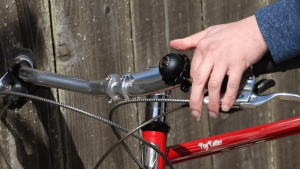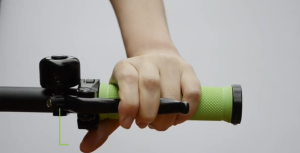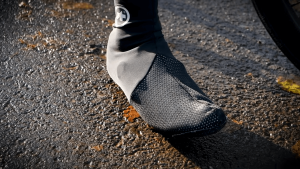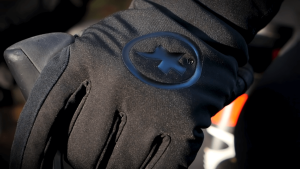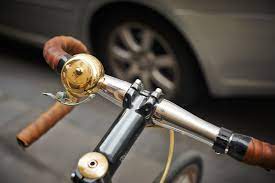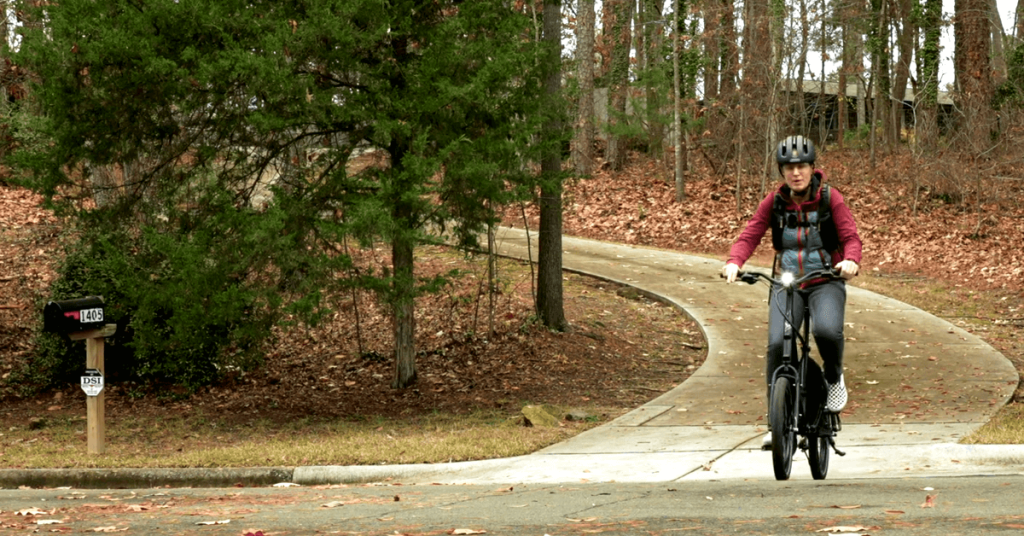INTRODUCTION
If you need clarification on whether having a bike bell is necessary, it might be surprising to learn that it’s useful and a legal requirement in certain US states such as New York and South Carolina. In this article, we’ll discuss the significance of bike bells in improving safety, how to choose one that suits your preferences and tips for using them effectively. So lets start on RING OR SILENT: DO I NEED A BIKE BELL FOR SAFETY?
Using a bike bell can significantly improve your safety when cycling on the road. It helps to alert pedestrians and other cyclists of your presence, which reduces the risk of accidents.
Studies have shown that vehicles and pedestrians are more likely to react quickly to the sound of a bell than other auditory cues. Therefore, by installing a bike bell on your handlebars, you can take an essential step toward making your cycling experience safer for everyone involved.
KEY TAKEAWAYS
- Bike bells are useful and legally required in certain US states, such as New York and South Carolina. They play a vital role in enhancing safety by facilitating communication between cyclists and pedestrians, thereby reducing accidents and mishaps. Using a bike bell, you can alert pedestrians and other cyclists of your presence, foster better communication on shared paths, and minimize the chances of collisions.
IMPORTANCE OF BICYCLE SAFETY
Riding a bike on open roads gives you a sense of freedom that cannot be matched. However, you must also ensure that you prioritize safety to avoid any accidents. Unfortunately, cycling accidents are common, mainly due to the lack of preventive measures taken by riders. This emphasizes the importance of bike safety.
To ensure safety while cycling, it’s essential to use bike accessories like helmets and lights. These accessories can significantly reduce the number of accidents on shared paths, resulting in a safer environment for cyclists and pedestrians.
Bike bells are also crucial bicycle accessories that serve a dual purpose. They comply with legal requirements while improving communication between cyclists and people sharing the path. By ringing the bell, cyclists can alert pedestrians while cycling or provide warning signals when moving at high speeds in crowded areas. This simple device is a vital defense against potential collisions or mishaps.
THE ROLE OF BIKE BELLS IN ENHANCING SAFETY
Safety is paramount for cyclists and others around them. Bike bells play an essential role by serving as percussive signaling instruments. They aim to alert pedestrians and cyclists to an approaching bicycle, improving road safety.
Bike bells are handy for ensuring pedestrian safety. When pedestrians hear the bell, they can react quickly and make way, reducing the risk of accidents or mishaps on narrow roads or shared paths. Bells indicate presence and effectively communicate intentions, particularly when passing someone from behind.
Although some may question their necessity, bike bells significantly enhance rider safety by fostering better communication among road users.
UNDERSTANDING BIKE BELLS
Bike bells are an essential bicycle accessory that serves as percussive signaling instruments to ensure safety. Their primary purpose is to help cyclists warn pedestrians and other road users of their presence, particularly in congested urban areas or on shared paths. The distinct ring of a bike bell immediately communicates the message, catching attention more effectively than a shouted warning. Today, various bike bells are available on the market, offering different sound options and volume levels to suit individual preferences.
Legally, the necessity of a bike bell varies from region to region. In many states across America, such as New York, South Carolina, Georgia, and New Jersey, laws mandate using bike bells for enhanced safety measures. However, unlike in other countries where it might be obligatory, such as in Australia, or optional, such as in the UK, there are no federal laws binding this rule nationwide in America.
Despite the global diversity of legal requirements, having a well-functioning bell can significantly enhance cycling communication and help create safer environments for all road users.
DEFINITION AND PURPOSE OF BIKE BELLS
A bike bell is a small, handheld device mounted on bicycles. Its purpose is to serve as a percussive signaling instrument that warns pedestrians and other cyclists of your presence on the road or bike path. By just flicking your thumb, you can emit a clear, distinctive sound that alerts others to your approach. Bike bells are designed to enhance safety by reducing accidents and promoting communication between riders and pedestrians. They are not only more effective than shouting, but they also provide a polite way to indicate your presence while cycling. While there may be no legal requirement for bike bells in the US, they are highly encouraged for the safety benefits they offer.
LEGAL REQUIREMENTS FOR BIKE BELLS IN DIFFERENT REGIONS
It is crucial to abide by local laws and regulations when cycling to ensure safety on the road. Different regions have varying legal requirements for bike bells, with some having strict rules while others offer more flexibility. In the United States, several states, including New York, Georgia, New Jersey, Indiana, and South Carolina, require bicycles to have a bell. However, in most other states, it is not mandatory to have a bell fitted, but some local jurisdictions may need it. Therefore, it is essential to check the local laws of the area where you are cycling.
On the other hand, it is not illegal to ride a bicycle without a bell in the United Kingdom. Therefore, if you cycle in the UK, you are not legally required to have a bell on your bike.
It is always better to be aware of the local laws and regulations to avoid violations and ensure a safe cycling experience.
BENEFITS OF USING A BIKE BELL
Using a bike bell while cycling has many benefits that contribute to overall safety on the road:
- It is an effective way to alert pedestrians and other cyclists of your presence, preventing accidents and promoting a safer and more harmonious sharing of paths.
- It enhances communication on shared paths, allowing you to notify others of your intentions or warn them if necessary, thereby helping to prevent misunderstandings and potential collisions.
- Increased usage of bike bells can help normalize the sound, creating awareness among motorists and pedestrians about the presence of cyclists on the road, which leads to improved mutual respect and reduces the chances of accidents occurring.
Remember to prioritize safety while cycling by wearing a helmet, using reflectors or lights for visibility, obeying traffic laws, and signaling correctly when needed.
ALERTING PEDESTRIANS AND OTHER CYCLISTS
Bicycle bells are crucial in alerting pedestrians and other cyclists of your presence on the road or shared paths. By ringing your bike bell, you can signal to pedestrians that you are approaching and give them a chance to move out of your way. This is particularly important in crowded areas where people may need to be more focused and notice an approaching cyclist. Additionally, bike bells help communicate with other cyclists on the road or paths, allowing you to warn them of potential hazards or indicate your intention to pass.
A bike bell ensures you can navigate safely and avoid accidents by making yourself known to those around you. In busy city streets or peaceful park trails, using a bike bell is an effective way to enhance safety for everyone. So, always have a bike bell with you and use it when necessary to ensure a safe and enjoyable ride.
ENHANCING COMMUNICATION ON SHARED PATHS
Using a bike bell is essential for improving communication on shared paths. It plays a crucial role in alerting pedestrians and other cyclists of your presence, thereby preventing accidents and promoting overall safety. This becomes even more important in crowded areas where people may need to be aware of approaching bicycles. For this very reason, some US states have made it mandatory by law to use a bike bell on roads or bike paths. By utilizing a bike bell, you can effectively communicate your intentions and help create a safer environment for everyone sharing the same space.
REDUCING ACCIDENTS AND PROMOTING OVERALL SAFETY
Bike bells are essential in reducing accidents and promoting overall safety for cyclists. By alerting pedestrians and other cyclists of your presence, bike bells help prevent unexpected collisions and near-misses. Studies have shown that using bike bells can significantly decrease the likelihood of accidents on shared paths and narrow roads. Additionally, bike bells enhance cyclists’ communication, allowing smoother navigation in busy areas. Using a bike bell to signal your intention to pass or overtake, you can avoid misunderstandings and potential conflicts with others on the road or path. Prioritizing using a bike bell keeps you safe and contributes to creating a more harmonious cycling environment for everyone involved.
FACTORS TO CONSIDER WHEN CHOOSING A BIKE BELL
- When searching for a bike bell, you should consider the various types available, such as traditional, electronic, or horn-like bells. Look for a bell with adjustable sound options and volume control to match your surroundings and personal preferences. Ensure the bell is compatible with your handlebar type and size for easy installation. Select a durable and weather-resistant bell that can withstand various riding conditions. When choosing a left or right-handed bell, keep your comfort and ease of use in mind. Remember, it is important to prioritize quality over price, as investing in a high-quality bike bell will guarantee reliability and longevity. Research any legal requirements for bike bells in your area to avoid potential fines or legal issues. Consider exploring reputable brands like Spurcycle and Knog for quality bike bell options.
DIFFERENT TYPES OF BIKE BELLS
Regarding bike bells, there are many options to choose from, depending on your preferences and needs. If you like a traditional and vintage look, you can opt for a flick-style bell that is easy to use with your thumb. On the other hand, if you prefer a more modern solution, an electric bike bell with a push-button design might be the right choice for you. An air horn can be a good option for those who want a loud and attention-grabbing sound. Additionally, metal bells are a popular choice because they are durable and have a timeless design. Ultimately, the type of bike bell you choose will depend on your style preference and the terrain you will be riding on.
SOUND OPTIONS AND VOLUME CONTROL
Bicycle bells have various sound options and volume control settings to suit different preferences and environments. Some bells produce a soft, gentle ring, while others emit a louder, more attention-grabbing chime.
Adjusting the volume allows cyclists to tailor the bell’s sound according to their needs and the noise level. For instance, in crowded areas or busy city streets with a lot of ambient noise, having a bell with a higher volume can help ensure that pedestrians and other cyclists hear it.
On the other hand, when cycling on quieter paths or around sensitive wildlife areas, using a softer tone can be considerate towards others while still alerting them of your presence. With these customizable sound options and volume control features available in bike bells today, cyclists have greater flexibility in finding the perfect fit for their safety needs on the road or trail.
MOUNTING OPTIONS AND COMPATIBILITY
Various mounting options are available for bike bells, allowing you to choose the most convenient and secure placement on your handlebars. Some people prefer to mount their bike bell closer to the grips, while others opt for a position closer to the center stem.
The good news is that many bike bells are designed to fit most handlebar widths, ensuring compatibility with a wide range of bikes. So whether you have a road, mountain, or hybrid bike, there’s likely a suitable mounting option.
Additionally, some famous bike bells like Timber Bell V4 offer compatibility and ease of installation, making it even more straightforward to equip your bicycle with this essential safety device.
DURABILITY AND WEATHER RESISTANCE
Durability and weather resistance are crucial factors when choosing a bike bell. A durable bike bell is built to last, reducing the need for frequent replacements and ensuring its effectiveness in alerting others.
Withstanding various weather conditions, a weather-resistant bike bell can still function optimally, even in rainy or harsh environments. By investing in a high-quality and weather-resistant bike bell, cyclists can rely on its longevity and ability to keep them safe on their rides.
HOW TO INSTALL A BIKE BELL
Installing a bike bell is a straightforward process that can be completed in a few simple steps:
1. Choose a suitable location on your handlebars for the bell. It should be easily accessible and not blocked by any other accessories.
2. Depending on the type of bike bell you have, you may need to remove any existing handlebar grips or accessories to make room for the bell.
3. Place the mounting bracket or clamp around the handlebars in the chosen location. Ensure it is firmly secured and tight enough to prevent movement while riding.
4. Attach the bell to the mounting bracket or clamp following the manufacturer’s instructions. This usually involves tightening screws or fasteners to create a stable connection.
5. Test the placement and functionality of the bike bell by giving it a few quick rings. Adjust as necessary to ensure it can be easily reached and operated with minimal effort.
STEP-BY-STEP GUIDE FOR INSTALLING A BIKE BELL ON DIFFERENT HANDLEBARS
Installing a bike bell on your handlebars is a simple and effective way to enhance your cycling safety. To start, choose a bell that matches the diameter and style of your handlebars to ensure it fits properly.
Next, position the bell in a convenient location where you can easily reach it with your thumb or finger. Use the provided mounting hardware or straps to firmly secure the bell, ensuring it does not move or shake while you ride.
Finally, test the bell by giving it a gentle ring to make sure it produces a clear and audible sound. By following these easy steps, you can install a bike bell quickly and efficiently, allowing you to alert pedestrians and other cyclists of your presence on the road.
TIPS FOR PROPER POSITIONING AND ADJUSTMENT
It’s essential to position and adjust your bike correctly for a comfortable and efficient cycling experience. First, adjust the seat to be level front to back to ensure good posture and prevent discomfort. This will also help maintain stability during your rides. Additionally, ensure the seat is at the correct height by bending your knee slightly when your leg is fully extended on the pedal. By paying attention to these details, you can enjoy a more enjoyable and safer ride while minimizing the risk of injuries or discomfort.
BIKE BELL ETIQUETTE AND USAGE TIPS
Using a bike bell while cycling is essential for safety and courtesy reasons. Here are some tips to keep in mind regarding etiquette and usage:
1. Signal Early: When approaching pedestrians or other cyclists from behind, ring your bike bell with enough time for them to react and move out of your way.
2. Ring Once: A single, clear bell ring is usually enough to alert others of your presence. Avoid repeatedly ringing the bell, as it can be annoying and startle people.
3. Be Polite and Patient: Remember that pedestrians have the right of way on most paths, so use your bike bell as a polite reminder rather than an aggressive tool. Treat others with respect and wait for them to move aside before passing.
4. Use Visual Cues When Necessary: If someone is wearing headphones or appears distracted, making eye contact, using hand signals, and ringing your bell may be helpful.
5. Don’t Overuse in Crowded Areas: In busy places with many pedestrians or cyclists, it’s best to avoid using your bike bell excessively to avoid causing chaos or confusion.
6. Adjust Volume Accordingly: If riding in a quiet neighborhood or near wildlife-sensitive areas, consider lowering the volume of your bike bell to minimize disruption.
7. Consider Alternative Communication Methods: In situations where you need more than just a simple “excuse me,” such as when passing another cyclist on a narrow path, verbal communication with your bike bell can be helpful.
8. Respect Personal Space: While signaling your presence is essential, avoid unnecessarily invading someone’s personal space. Give people ample room when passing by, and maintain a safe distance.
WHEN AND WHERE TO USE A BIKE BELL EFFECTIVELY
Using a bike bell effectively promotes safety and communication on the roads and trails. It is essential to ring your bike bell when approaching pedestrians, especially from behind, to alert them of your presence. This allows them to move aside or be aware of your proximity, reducing the risk of collisions. Additionally, when riding on shared paths with other cyclists, using a bike bell can help communicate your intention to pass or overtake safely.
Using a bike bell courteously and respectfully without startling or alarming others is essential. By using a bike bell in appropriate situations, you contribute to creating a safer environment for everyone on the road.
RESPECTING PEDESTRIANS AND OTHER CYCLISTS
Respecting pedestrians and fellow cyclists is essential to create a safe and harmonious cycling environment. As cyclists, we are responsible for being considerate of others on the road or shared paths. This includes slowing down when approaching pedestrians, providing them with enough space, and using the bike bell to alert them of our presence. When passing other cyclists, we should use the bike bell as a friendly signal and ensure enough space to avoid any safety issues.
By respecting pedestrians and fellow riders, we can promote a culture of cooperation and reduce the potential for accidents or conflicts on the road.
COMMUNICATING INTENTIONS ON MULTI-USE TRAILS
Clear communication is essential when sharing multi-use trails with pedestrians, fellow cyclists, and equestrians. It helps to establish a safer environment for everyone involved. Using a bike bell is one effective way to communicate your intentions on these trails.
By ringing your bell, you can alert others of your presence and let them know you are approaching from behind or passing by. This simple action can prevent surprises and potential accidents. However, it’s important to note that some trail users prefer verbal communication over bells, so it’s always best to be considerate and adaptable.
As an added tip, the Bicycle Alliance of Minnesota recommends courteously announcing your intentions by saying “on your left” and ringing your bell on multi-use trails. Always be respectful and considerate of other trail users to ensure a positive experience for everyone. Clear communication is essential when sharing multi-use paths with pedestrians, fellow cyclists, and equestrians. It helps to establish a safer environment for everyone involved. Using a bike bell is one effective way to communicate your intentions on these trails.
By ringing your bell, you can alert others of your presence and let them know you are approaching from behind or passing by. This simple action can prevent surprises and potential accidents. However, it’s important to note that some trail users prefer verbal communication over bells, so it’s always best to be considerate and adaptable.
As an added tip, the Bicycle Alliance of Minnesota recommends courteously announcing your intentions by saying “on your left” and ringing your bell on multi-use trails. Always be respectful and considerate of other trail users to ensure a positive experience for everyone.
ADDITIONAL SAFETY MEASURES FOR CYCLISTS
To ensure your safety while cycling, it’s essential to follow these guidelines:
1. Always wear a properly fitted helmet to protect your head in case of a fall or collision.
2. Use front and rear lights and reflective gear to increase visibility, especially when cycling at night or in low-light conditions. Installing reflectors on your bike’s pedals, wheels, and frame can make it more visible from all angles.
3. Obey traffic laws and signals, including stopping at red lights and stop signs, signaling turns, and yielding the right-of-way when necessary.
4. Avoid distractions such as using electronic devices while cycling to focus on the road and potential hazards.
5. Always ride with the traffic flow rather than against it to minimize the risk of accidents.
6. Be aware of blind spots for drivers and position yourself accordingly on the road to maximize visibility.
7. Practice defensive cycling by anticipating potential dangers and maintaining a safe distance from other vehicles.
8. Take extra caution at intersections where many accidents involving cyclists occur. Make eye contact with drivers before proceeding.
9. Learn proper hand signals and use them consistently when turning or changing lanes to communicate your intentions clearly to other road users.
Remember that these additional safety measures are crucial for protecting yourself as a cyclist. By prioritizing safety and taking these precautions, you can enjoy a safer riding experience while minimizing the risk of accidents or injuries. Stay vigilant on the road, respect traffic rules, and always remain aware of your surroundings.
IMPORTANCE OF WEARING A HELMET
Wearing a helmet is of utmost importance for bike safety. Shockingly, only 18% of cyclists wear a helmet while riding. However, statistics show that up to 47% of injured cyclists suffer head injuries.
Wearing a helmet can prevent lifelong brain injuries and even save lives. It’s one of the most crucial bike safety rules every cyclist should follow. Regardless of your age or ethnicity, wearing a helmet is essential for protecting your head in case of an accident.
Helmets are highly effective at reducing the risk of severe brain injuries and death, so always prioritize safety by strapping on your helmet before hitting the road.
REFLECTORS AND LIGHTS FOR INCREASED VISIBILITY
Ensuring visibility to others while cycling is crucial to bicycle safety. Significantly, reflectors and lights can greatly enhance visibility, especially during low or dark riding conditions. In many regions, it is a legal requirement to have lights on your bike from sunset to sunrise. Front lights help you see the path ahead and make you more noticeable to motorists and pedestrians. Even in daylight hours, a bright light can significantly increase your visibility, reducing the risk of accidents. By adding reflectors and glow to your bike, you are taking proactive steps towards enhancing your safety while cycling.
OBEYING TRAFFIC LAWS AND SIGNALING PROPERLY
Adhering to traffic laws and signaling accurately is crucial to ensure the safety of both bicyclists and other road users. Like drivers, bicyclists must follow standard vehicle laws, including stopping at red lights and stop signs. It’s essential to remember that traffic signs and signals apply to everyone on the road, regardless of their mode of transportation. By following these rules, cyclists can prevent accidents and promote smooth traffic flow.
Moreover, proper signaling techniques, like hand signals, can communicate your intentions to other road users, reducing confusion and preventing collisions. Always remember that obeying traffic laws is a legal requirement and a responsible choice that helps create safer roads for all users.
SO,
RING OR SILENT: DO I NEED A BIKE BELL FOR SAFETY?
Bicycle safety should be a top priority for all cyclists, regardless of their experience level. In this regard, using a bike bell is an effective way to enhance your safety on the road. It is mandatory in specific regions and is crucial in alerting pedestrians and other cyclists of your presence while riding.
By considering getting a bike bell, you can actively reduce accidents and promote overall road safety. Whether riding on busy city streets or peaceful country roads, using a bike bell enhances communication on shared paths, reduces accidents, and promotes safety for all.
So, if you haven’t already, prioritize bicycle safety and ensure you have this essential piece of equipment for your next ride!
FAQS
1-IS IT NECESSARY TO HAVE A BIKE BELL?
While not legally required in all jurisdictions, having a bike bell is highly recommended for safety reasons. It allows you to alert pedestrians and other cyclists of your presence, especially when visual cues are insufficient.
2-WHAT ARE THE BENEFITS OF USING A BIKE BELL?
A bike bell prevents accidents by warning others and reducing surprises.
3-ARE THERE ANY ALTERNATIVES TO USING A BIKE BELL?
Unlike shouting or hand signals, bike bells are a clear and universally recognizable way to grab attention.
4-DO I NEED TO INSTALL A SPECIAL MOUNT FOR MY BIKE BELL?
Bicycles usually have handlebars compatible with standard-size bells, so unique mounts are unnecessary. Verify your bike’s compatibility before purchasing a bell to ensure proper installation.



